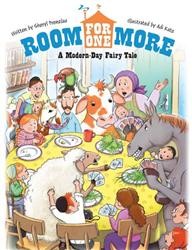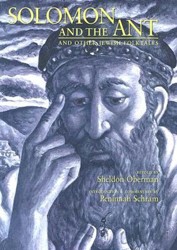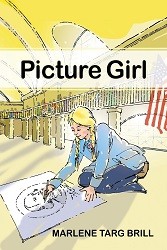In the opening of Devora Busheri and Menahem Halberstadt’s new picture book about the great Jewish scholar Rabbi Akiva, an older man is seated at a desk like a young student. He holds a quill pen and a scroll as he looks above at a cascade of Hebrew letters surrounded by flowers, plants, and birds. Based on a traditional source, The Donkey and the Garden explains how this pillar of learning, who well into adulthood could not distinguish an aleph from a bet, had to attend school with children in order to achieve his goal of literacy.
Busheri’s patient and informative text and Halberstadt’s playfully expressive drawings convey the future rabbi’s courage and humility, as well as the loving support of his devoted wife, Rachel. The book works on several levels: as an introduction to the life of Rabbi Akiva, as a message about the value of persistence in the face of obstacles, and as an homage to the strong woman whose faith in her husband enabled his success. Those flowing letters rising above Akiva also pay tribute to the meaning of reading in a Jewish life.
The story begins by creating a credible picture of Akiva’s simple life. He is a shepherd, who lives with his wife in a house so rustic that it is “maybe not quite a house, but a barn full of straw that kept the two of them warm in winter and gave them shade in summer.” Busheri is able to reduce her description to its essence, presenting exactly what children need to know in order to identify with her characters. Unlike Akiva, his wife came from an affluent family but “Rachel believed in him.” She has to combine her love with creativity in order to devise a solution to Akiva’s sadness. Who else but a smart and loyal wife would come up with the idea of a donkey with a garden on its back?
The unstated premise of the story is the natural hesitancy of children to try something new if they fear ridicule. Busheri captures the tone of folklore but adds details consistent with contemporary children’s experience. Akiva fears that the dissonant scale between his large body and a children’s schoolroom will defeat his purpose; the other students, he points out, might mock his attempt to fit his large body into a small seat, or his big hand holding a small pen. Actually, he is terrified to give up his comfortable feeling of control as a shepherd and take on an overwhelming task. Instead of lecturing him, Rachel brings their oddly purposed donkey to the local market. The villagers’ initial ridicule turns to fascination and then acceptance, as they realize that a garden-carrying donkey has its own usefulness.
The lovely subtlety of Halberstadt’s style shines from every page. A range of colors from pastel to deep earth tones complements the line drawings. The comical donkey is covered with thin, light-brown lines. People of all skin colors and ages surround him, touching the flowers and fruits in his portable garden with surprise and happiness. Akiva and Rachel appear unaffected but at the same time noble; their context affects their stature. The same strong man holding a goat in his arms is frightened and vulnerable while sitting behind young children on a school bench. Halberstadt reveals the disparity between Akiva and his schoolmates by portraying him as a solid figure clothed in dark brown to match his beard, while the children are drawn as barely-filled outlines with cartoon-like features. He brings all the years of his past to learning while their lives have barely begun.
Once Akiva starts to master the Hebrew alphabet, his pen conjures letters out of the air, including his famed summary of the Torah, “love your neighbor as yourself,” shown in lovely calligraphy. In their conclusion, the author and illustrator deliver a powerful message about lifelong learning as a diverse group of people proudly announce the skills they have acquired at different ages. It would be difficult to think of a more relevant or important message for everyone.
This highly recommended book includes a summary from the Midrash Hagadol about the story which inspired the book.
Emily Schneider writes about literature, feminism, and culture for Tablet, The Forward, The Horn Book, and other publications, and writes about children’s books on her blog. She has a Ph.D. in Romance Languages and Literatures.





